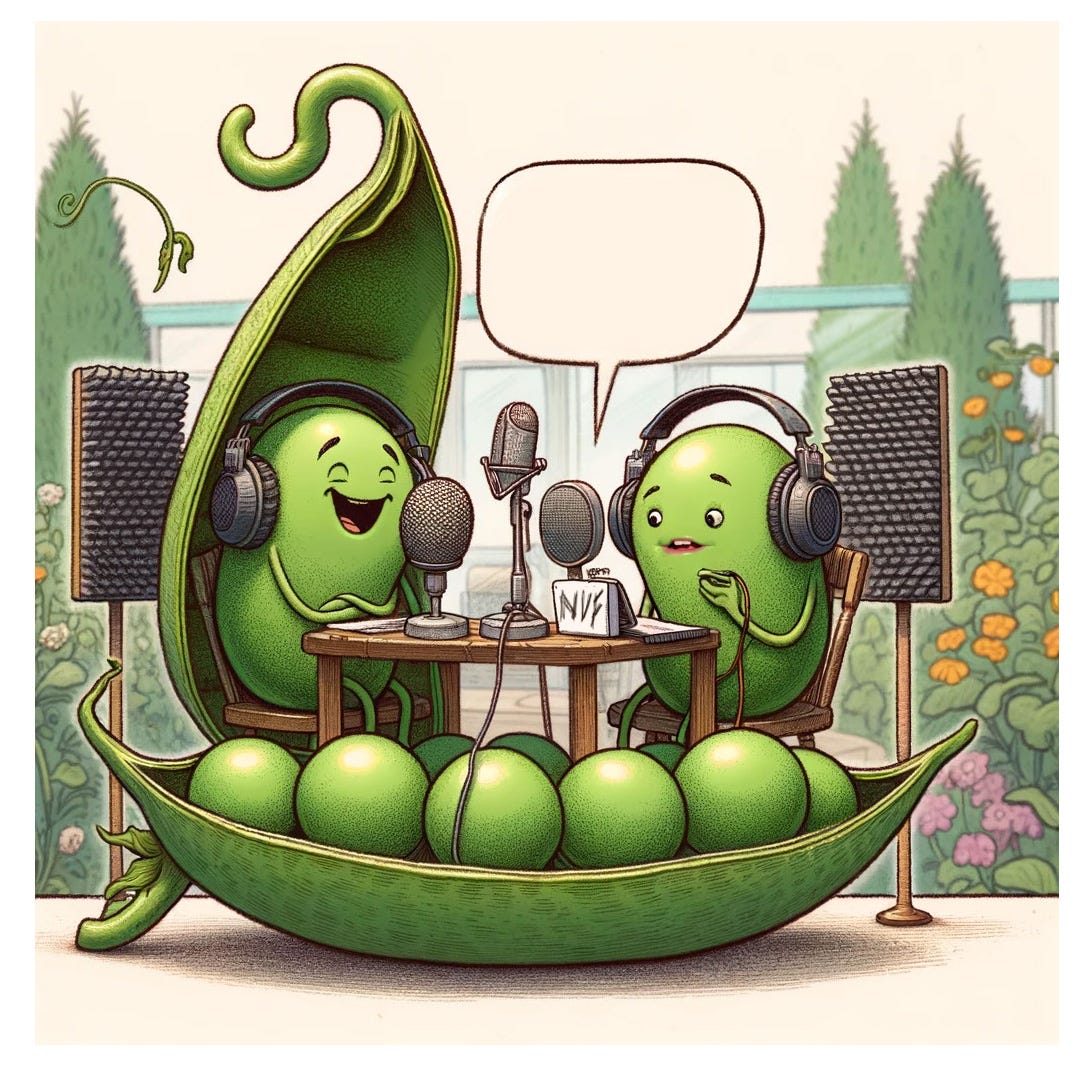NAPA VALLEY, Calif. — “What do you think of Women’s History Month?” Tim Carl asked me.
To tell the truth, I said, at first I was doubtful about such a designation, which reminded me too much of the announcements I get almost daily encouraging me to write about World Nutella Day or National No Pants Day.
If you visit calendarr.com/observances-2024, you will find that every day of 2024 has a designation. They range from the weird, such as Alien Abductions Day or National Bubble Wrap Appreciation Day, to the aspirational, such as Global Love Day or International Bat Appreciation Day.
Some days are worth remembering, I suppose, such as Pluto Demoted Day, but I admit I found it strange that World Day of Social Justice occurs the same week as National Sticky Bun Day.
At least, I admitted, women get a whole month, unlike World Rat Day. But I did wonder, when I first heard in 1987 that Congress had passed a resolution designating March as Women's History Month: Did this imply that for only one month a year we would tell women’s stories? Shouldn’t these be told all year long, every day? World Thinking Day is the day after National Walking the Dog Day (and the day before National Chili Day), but would it not be advisable to think more than one day a year? And dog-lovers among us know that every day is Walking the Dog Day. There is also a National Respect Your Cat Day. One day? What would any cat have to say to that?
Then I realized that the operative word is “history.”
I was in college when I first read Virginia Woolf’s “A Room of One’s One,” in which she considers the question of whether a woman could have written Shakespeare’s plays in his time. Her answer is no: “Let me imagine, since facts are so hard to come by, what would have happened had Shakespeare had a wonderfully gifted sister, called Judith.” (Shakespeare in fact had four sisters, but only one lived past infancy or childhood.)
As Woolf imagines a fictional Shakespeare’s sister, aspiring to write or to act onstage, she paints a tragic picture: “Who shall measure the heat and violence of the poet’s heart when caught and tangled in a woman’s body?” She replies to her question: “Any woman born with a great gift in the 16th century would certainly have gone crazed, shot herself, or ended her days in some lonely cottage outside the village, half witch, half wizard, feared and mocked at.” Her fictional Judith “killed herself one winter’s night and lies buried at some cross-roads where the omnibuses now stop outside the Elephant and Castle.”
When Carl asked me for the name of a woman I admired for a piece he was writing, I said the first one who came to mind, Jane Austen. She was born in 1775, only 159 years after Shakespeare died in 1616, but English society had changed enough that she was able to record her observations of the world with her “two bits of ivory.” She published her novels anonymously, “by a lady,” although her authorship was known. In college classes we did wonder: Was it because she never married or had children that she was able to write her brilliant stories?
Austen, of course, escaped obscurity, and these 250 years later her books are read, reread and cherished, and turned into movies, plays and spinoffs such as “Pride and Prejudice and Zombies” and “Pride and Prejudice in Cats.”
In her last novel, “Persuasion,” Austen’s character, Anne Elliot, remarks, “Men have had every advantage of us in telling their own story. Education has been theirs in so much higher a degree; the pen has been in their hands.”
Despite this, some women’s stories survived because of a certain memorable flamboyance: Cleopatra, Susan B. Anthony, Boudicca, Nelly Bly, Amelia Earhart, Hildegarde von Bingen — a medieval musician, theologian and poet who must have glowed with genius to have her songs survive a thousand years.
But what about the untold stories?
Each March Napa Valley historian Rebecca Yerger brings to my attention story ideas she has uncovered in our own small valley of remarkable women whose stories are largely unknown. Most often these are women who lived quiet lives, defined by roles as wives and mothers, yet they managed to follow a spark from somewhere within them that the myriad responsibilities of their lives couldn’t extinguish.
This month, for example, look for a story from Yerger about two Victorian ladies who lived in St. Helena and, inspired by a love of wildflowers, created their own legacies. One, Sophie Alstrom Mitchell, painted a series of wildflower paintings that somehow ended up in an attic in New England, only to be discovered years later and returned to her home valley. I will leave it to Yerger to provide the details of her story, but her paintings are now in the collection of the Napa Valley Museum.
So March’s closer examination reveals a bounty of new stories of women who, despite the odds Woolf so bleakly portrayed, became composers, physicians, astronomers, journalists and poets, and painters of wildflowers. The stories have been there all along. It just took shining the spotlight of a designated month on them. And so I concede that there is a value in these months devoted to Women’s History and Black History to show how much richer the world is than we had realized.
I am still, however, not so sure about National Clean Off Your Desk Day.
Sasha Paulsen is a Napa Valley-based novelist and journalist.
* "Rupert" is a comic series by Kathleen Scavone. Enjoy this clever and thoughtful work from a talented artist and writer.
For roughly 16 cents a day, subscribing gives you complete access to all our content, while also supporting our mission to provide exceptional local journalism in Napa Valley. Join us and be part of a community that values detailed, local storytelling.
Levity Corner
Caption context. Pick your favorite caption or add your own in the comments below.
Vote for your favorite in the poll below (there’s not enough room in the polls for the complete answers).
“Honestly, Parker, I feel like we're just two peas in a podcast."
"Welcome back to 'P2-Talk' where we always find peas of mind."
"Today's hot topic: To split or not to split, that is the question."
"Don't miss this week's episode, where we shell out advice on pod-casting!"
Other. Please include your own caption in the comments below.
Last Week
In her article "Dyslexia unveiled: The artistic odyssey of Will Ashford," Rosemarie Kempton explored artist Will Ashford's journey in expressing his dyslexia through art. Ashford's "Wordscapes" exhibit at Sofie Contemporary Arts in Calistoga features a collection of black-and-white canvases and altered-book pages that aim to convey the experience of dyslexia. His work, influenced by the challenges he faced due to dyslexia, includes innovative installations such as hillside re-creations of famous artworks. Ashford's exhibit is a comeback after the loss of his previous works in the 2017 Tubbs Fire.
In "Lake Berryessa: Glory Hole watch 2024," Peter Kilkus examined the unique characteristics of Lake Berryessa in Napa County, focusing on its water dynamics and the notable Glory Hole spillway. He revealed that despite being in Napa County, the lake primarily supplied water to Solano County. As of early March, it was uncertain if the spillway would overflow this year. The article also explored the spillway's efficient design and the lake's significance in the region.
In "Napa’s convergent lady beetles: a Master Gardener’s discovery and insights," Starr Green shared her observations of thousands of convergent lady beetles in Napa Valley. She discovered these beetles, known for their bright orange color and black spots, huddled together during cold weather for warmth. Green highlighted their importance in controlling aphids, offering advice for attracting and keeping them in gardens. Her article underscored the significance of these beetles in natural pest management.
In "Napa Firewise, community groups collaborate for strengthened wildfire protection," Dave Stoneberg reported on Napa County's increased efforts to mitigate wildfire risks following the 2020 Glass Fire. Led by Napa Firewise and local community groups, initiatives include land clearing with livestock, establishment of Fire Safe Councils, and substantial funding for fire-prevention measures. Key efforts focus on creating fire-resilient landscapes, strategic fire breaks and public education on wildfire preparedness. The article emphasizes the community's proactive approach to enhancing wildfire resilience amid increasing fire threats.
In "Winiarski is honored by the Julia Child Foundation," Sasha Paulsen reported on Warren Winiarski, a celebrated Napa Valley vintner, who received the inaugural Trustee Medal of Honor from the Julia Child Foundation for Gastronomy and the Culinary Arts. This award recognized Winiarski's extensive contributions to gastronomy and the culinary arts over his six-decade career. The ceremony, doubling as a fundraiser for the Smithsonian Food History Project, featured an auction that included Winiarski's famed 1973 cabernet sauvignon. Renowned for his influence in winemaking, education and conservation, Winiarski has been a pivotal figure in the wine industry, known for his role in the Judgment of Paris tasting and his dedication to preserving Napa Valley's agricultural heritage.
In "Sunday E-dition: Celebrating Underappreciated Women," Tim Carl marked Women's History Month by honoring not only prominent historical figures but also the many unsung heroines whose contributions have been crucial to societal progress. He traced the origins of Women's History Month, acknowledging the path of women's rights and the ongoing challenges faced, especially in healthcare rights. The article emphasized the importance of celebrating resilience and the pursuit of justice and equality by women throughout history. It also highlighted community tributes to underappreciated women, featuring a diverse array of influential figures from various fields and eras, including historical athletes, pioneering professionals, and key figures in arts and politics. The piece served as a reminder of the continued fight for gender equality and the need to recognize the vital role of women in shaping history and society.
In "Under the Hood: Implications of Lower Average Bottle Prices at Premiere NV Auction," Carl discussed the significant decrease in average bottle prices at the 2024 Premiere Napa Valley wine auction. The average price fell by 31% to $211 per bottle, indicating a shift in the wine market. Industry experts, including John Skupny and Hugh Davies, highlighted the importance of maintaining global market connections amidst this volatility. The article raised questions about the impact of this price drop on the Napa Valley Vintners' operations and the broader wine market, especially regarding the promotion of Napa Valley wines and the diversification of its wine portfolio beyond cabernet sauvignon.
Next Week
Next week, Napa Valley Features offers a diverse lineup of content, starting with Scavone's insight into Moore Creek, followed by Stoneberg's exploration of 100 years of immigration (1820 to 1920) into the Napa Valley. The Master Gardener series will continue to cultivate readers' knowledge of local gardening. Wine enthusiasts can anticipate Dan Berger's return to the Wine Chronicles, sharing new perspectives on oenology. Friday brings the Weekender, guiding readers through upcoming Napa Valley events, while Carl delves into the evolving world of tourism in Saturday's "Under the Hood" series. This selection, accompanied by an economic dashboard and handpicked reading recommendations, ensures an informative and engaging week, with even more content to be included.










Hmm, nine peas in a pod? It will never catch on.
Nice column. the Cartoon was fun too. Hard to pick my choice, but amusing. Always wonderful to be amused on the day after we lose an hour of sleep...